Home Exercises Program
For Acute Upper Limb Fracture
What is an upper limb fracture?
An upper limb fracture occurs when a fracture, commonly known as a break or crack on a bone, occurs in the upper extremity. These includes the wrist, arm, elbow and upper arm which usually occurs after a fall. It is a common childhood injury because young children have bones that are growing and not yet fully developed.
How to care for a child with an upper limb fracture?
Cast care:
- Keep the cast clean and dry
- Check for cracks or breaks in the cast
- Rough edges can be padded to protect the skin from scratches
- Don't scratch the skin under the cast by putting objects inside the cast
- Don't put powders or lotion inside the cast
- Cover the cast while your child is eating to prevent food spills and crumbs from entering the cast
- Prevent small toys or objects from being put inside the cast
- Encourage your child to move his or her fingers to help blood flow in the injured area and prevent stiffness
Circulation Checks:
Check your child’s fingers several times every day to see if there is a problem with blood circulation or flow. Do circulation checks 3 or 4 times a day while your child is awake or if he wakes up with pain.
- The finger should stay warm to the touch and pink in color
- The fingers should move freely
- There should be no tingling or numbness
How to Perform Circulation Check
- With your fingers, squeeze the tip of the finger on the injured side or push down on the nail
- Where pressure is applied, the area will look white or lighter
- Release the pressure
- Time how long it takes for the color to return to pink you can time this with a watch
- If it takes longer than 2 seconds (the time it takes to say capillary refill), the refill is slow.
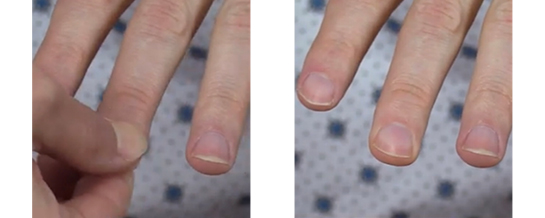
If your child has result that is not normal, please follow the advice below:
- Raise the injured arm above the heart level.
- Support it with blankets and firm pillows.
- Let your child lie flat down.
- Check the circulation again in one hour.
Positioning:
During the first few days, it is important for your child to rest and raise their arm above heart level to minimize swelling. Raise your child’s arm on pillows when they are sitting or lying down
- Lying
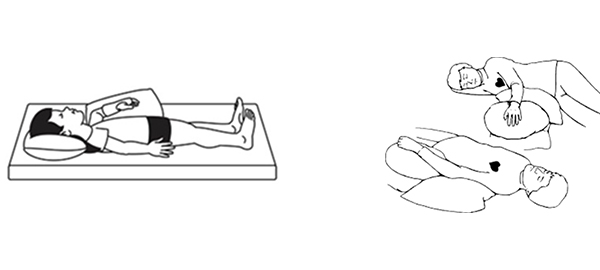
- Sitting
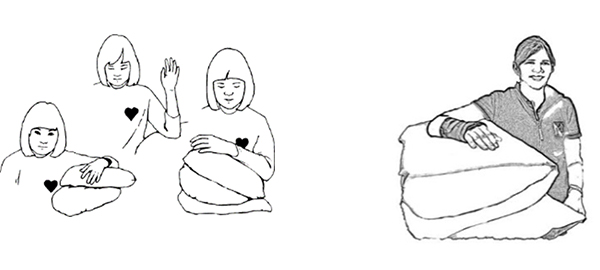
- Walking
- Use an arm sling when walking, but it can be removed when your child is lying down.
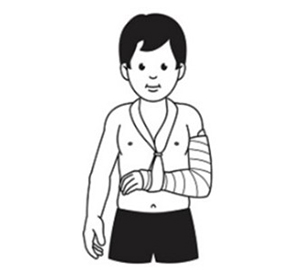
- The cast and sling are placed under loose clothing, and not passed through the sleeve.
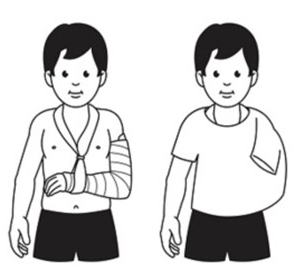
- Use an arm sling when walking, but it can be removed when your child is lying down.
Home Exercises
The following exercises are important and will help reduce swelling and prevent stiffness and weakness.
Exercise1:
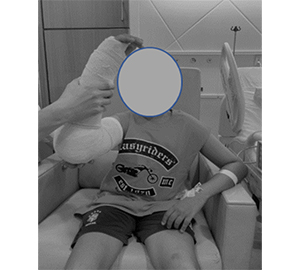
While supporting the cast:
- Raise arm forward at shoulder level
- Hold for five seconds
- Repeat it five times
Exercise 2:
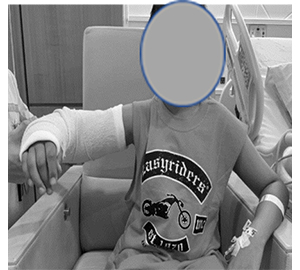
While supporting the cast:
- Move arm away from the body at shoulder level
- Hold for five seconds.
- Repeat it five times.
Exercise 3:
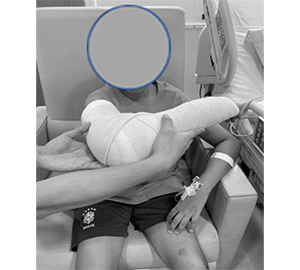
While supporting the cast:
- Move arm towards the body
- Hold for five seconds and bring it away from the body
- Repeat 5 times.
Exercise 4:

While supporting the cast, ask your child to shrug both shoulders up then bring them back down.
Exercise 5:
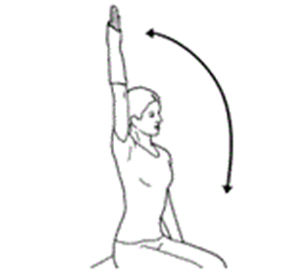
Arm lifting
- Lift arm up and bring it down again.
- Hold 5 seconds.
- Repeat 5 times
Note: This can be done if the cast is below elbow.
Exercise 6:
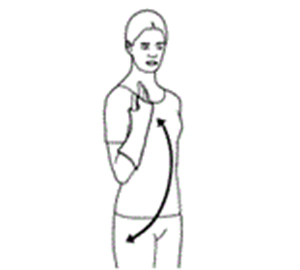
Elbow flexion/extension
- Fully bend and straighten the elbow
- Repeat 5 times
Note: This exercise cannot be performed if the cast is above elbow
Exercise 7:
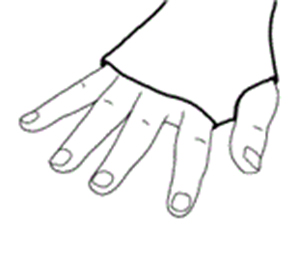
Finger Abduction
- Spread fingers apart
- Bring fingers back together
- Repeat 5 times
Exercise 8:
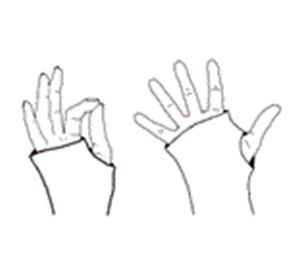
Thumb Opposition
- Put thumb against each other fingertip in turn
- Straighten fingers and spread them apart between touching the next fingertip
- Repeat 5 times
Exercise 9:
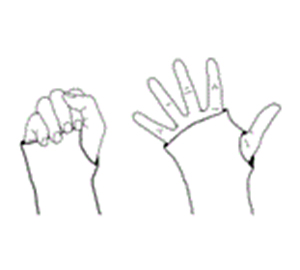
Finger Extension/Flexion
- Make a fist.
- Straighten fingers and spread them apart.
- Repeat 5 times
Dressing:
- When dressing, first put the arm with cast into the clothing, then the healthy arm
- When undressing your child, remove the clothing from the healthy arm first. Then remove it from the casted arm
- Select clothing made of stretchy material which fits easily over bulky casts
- Select clothing without zippers or buttons
- Choose shirts with short or no sleeves
- Select shirts which easily go over your child’s head
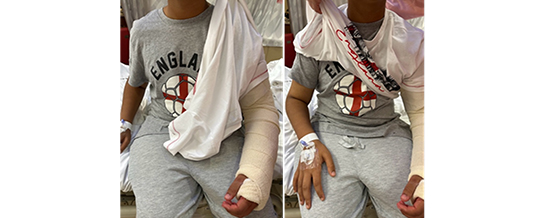
Bathing with a Cast:
A child in a cast can have a bath or a shower. It is safer to have your child take a bath rather than a shower. Before a bath or shower, wrap a towel around the top of the cast, put a plastic bag over the cast and tape it together closing the opening. This does not make the cast waterproof, but helps protect the cast from moisture. Be careful not to place the cast under water during a bath. It is important to keep the cast dry and not let water in.
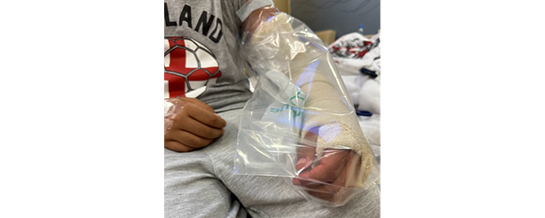
Visit the Emergency Department if your child:
- Has a fever
- Numbness, tingling, burning, or stinging in the injured arm
- Sores under the cast
- Pain or swelling that gets worse
- Cold, pale, or bluish skin
- A crack or soft spots in the cast
- Wet cast that won’t dry
- A cast that’s too tight or too loose
- Red or raw skin around the cast
- Trouble moving fingers

